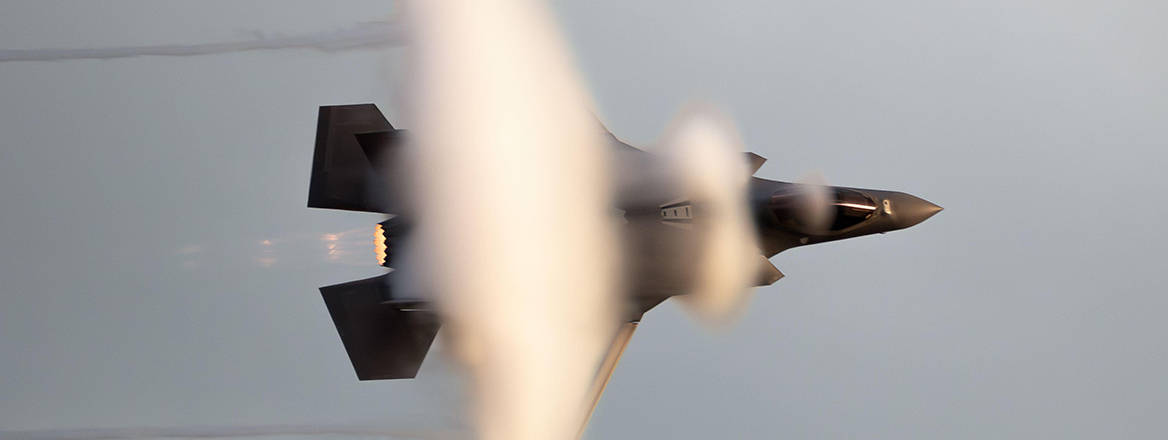NATO allies aiming to increase independence from Washington should focus on generating European capacity in areas where only the US military can currently perform key missions.
The recent NATO Summit was almost entirely defined by the ambitious spending pledge to spend 3.5% of GDP on core defence expenditure by 2035. This radical increase in spending commitments was partly driven by a widespread recognition of the long overdue need for Europe to pay more toward its own defence in the face of a rapidly increasing Russian threat. However, it was also due to the urgent need to keep a radically transactional US Administration engaged at the core of the Alliance. Following these commitments, countries now face the question of how to spend the funding they have pledged to ramp up through the coming decade.
There will be significant competing pressures from armed services, defence ministries, governments and industrial players across NATO. Each will attempt to frame the challenges and requirements in such a way as to make the case for their preferred acquisition and force design options. However, one question will likely dominate – to what extent should non-US NATO members prioritise acquisitions and force structure changes to reduce military and defence industrial dependence on the United States?
Damaged Faith in US Security Guarantees
It is unarguable that the second Donald Trump Administration has badly damaged the faith that most European politicians and electorates previously had in the United States as the ultimate guarantor of democracy and European security. It has made a sharp break from the previous Administration’s policy on military assistance to Ukraine and instead piled pressure on Kyiv while pursuing a series of strikingly conciliatory approaches towards Moscow. Even more disruptively, President Trump has repeatedly refused to rule out using military force against a NATO Ally – Denmark – to seize Greenland, and repeatedly stated a desire to force Canada to become part of the United States.
The spending pledge at the recent NATO Summit seems to have been enough to get President Trump to recommit publicly to collective defence under Article V. This is certainly a major relief, but it will not and cannot undo the damage done since January in full. Furthermore, Secretary of Defence Pete Hegseth and Vice President JD Vance have repeatedly delivered a message that senior US military and political leaders have been delivering behind closed doors for years. The United States can no longer shoulder the bulk of military responsibility for defending Europe against Russian threats due to the huge military resources required to deter and potentially defeat Chinese forces in the Indo-Pacific.
The seismic shifts in US politics since President Trump returned to the White House have made far greater European defence autonomy an obvious necessity
In many ways, these blunt statements have had their intended effect – forcing a rapid increase in European defence spending. However, the Administration’s policies have also led to understandable calls in almost every NATO country from multiple sides of the political spectrum to pursue military independence from the United States as fast as possible. The most common expression of this instinct has been to advocate for exclusively buying European weapon systems to avoid leverage that might be used by the Trump Administration or a future US government with similar or even more divergent geopolitical views to hamper or even prevent European nations defending themselves in a crisis.
Dependencies on the US
One of the highest profile public debates on this issue in multiple countries was around the F-35 fighter aircraft and the fear that the US might use its control over the aircraft’s software to render the jets inoperable using a so-called ‘kill-switch’. The fact that such a ‘kill switch’ does not exist is only partial comfort, since there is still genuine dependency on the US for F-35 users. A decision by a US Government to cut off supplies of spare parts, software and mission data updates, or maintenance support could cause rapid degradation of serviceability and combat effectiveness, and ultimately render a fleet non-viable.
However, it is vital to remember that such a scenario would mean that the US was not only refusing to actively participate in the conflict in question but was actively attempting to prevent said F-35 user from defending itself. In such a case, almost all NATO member states would have far greater problems than their F-35 fleet not functioning as planned.
Put simply, almost all non-US NATO members are currently heavily reliant on the US military actively conducting a host of critical missions such as suppression and destruction of enemy air defences (SEAD/DEAD), command and control functions and networks, key enablers like airborne electromagnetic attack, and rapid resupply of munitions and other consumables in any major conflict. This would be especially evident in a defensive effort to repel a Russian attack on a NATO member state, due to the formidable Russian ground-based air defence (GBAD) network, long range strike capabilities, large ground forces and its genuinely superpower-class nuclear arsenal.
Which Gaps to Fill First?
European nations should concentrate first and foremost on filling in the capability gaps where they currently rely on the US military doing all or most of the fighting to repel a direct Russian attack on a NATO member state.
Firstly, because replacing all weapons and capabilities purchased from the United States or that are otherwise reliant on US support or resupply to function in a conflict would be an almost impossible endeavour within the next decade. European industry simply does not make suitable analogues to replace a host of high-end US weapon systems, and developing such systems and manufacturing them in quantity will take many years even as large-scale funding is committed.
Secondly, any effort to deliberately phase out existing US weapon systems and cancel existing procurement contracts would undoubtedly produce a strong negative reaction from the Trump Administration that has just been coaxed back towards its commitments under Article V.
Thirdly, the most likely scenario in which Russia might risk wider aggression against Europe is if the US has already been drawn into a war or dangerous standoff with the People’s Republic of China. In such a scenario, the US would likely be politically and militarily willing to support European-led defensive efforts, but the bulk of their own forces would be concentrated in the Indo-Pacific and thus unable to immediately help.
So What?
In the long term, the seismic shifts in US politics since President Trump returned to the White House have made far greater European defence autonomy an obvious necessity – as the President and key officials have themselves repeatedly demanded. In the air domain, this makes efforts like the Anglo-Japanese-Italian Global Combat Aircraft Programme (GCAP) and troubled Franco-German-Spanish Future Combat Aircraft System (FCAS) programme significantly more important. This is both due to their greater attractiveness from an operational sovereignty perspective in view of seismic shifts in US politics, and also because such programmes are now more secure in terms of funding than they were previously, thanks to far higher projected European defence spending in the 5-10 year timeframe.
In the short-medium term, however, the UK and other European NATO members must prioritise being able to defend themselves against a heavily armed, combat experienced and embittered Russian force without the US doing the bulk of our fighting for us. This means urgently and honestly confronting the areas where only the US currently provides key capabilities and treating the filling of those gaps as a crisis-response task.
Where European weapons exist that can meet the requirement and do so rapidly, it clearly makes sense to prioritise investment at home. However, in cases like that of the F-35, which is the lynchpin of any NATO SEAD/DEAD campaign; where there are no effective alternatives available to US-made systems, European states should not hesitate to acquire them as fast as possible.
© RUSI, 2025.
The views expressed in this Commentary are the author's, and do not represent those of RUSI or any other institution.
For terms of use, see Website Terms and Conditions of Use.
Have an idea for a Commentary you'd like to write for us? Send a short pitch to commentaries@rusi.org and we'll get back to you if it fits into our research interests. View full guidelines for contributors.
WRITTEN BY
Justin Bronk
Senior Research Fellow, Airpower & Technology
Military Sciences
- Jim McLeanMedia Relations Manager+44 (0)7917 373 069JimMc@rusi.org




